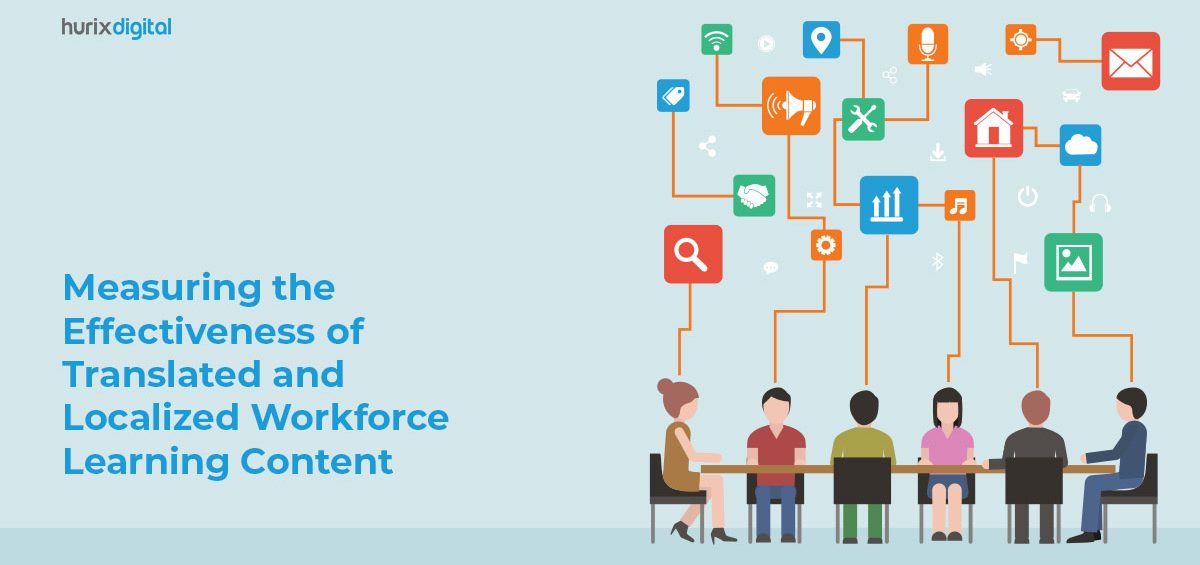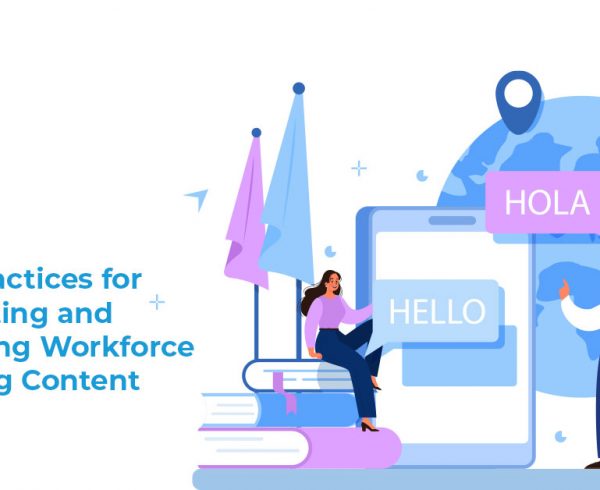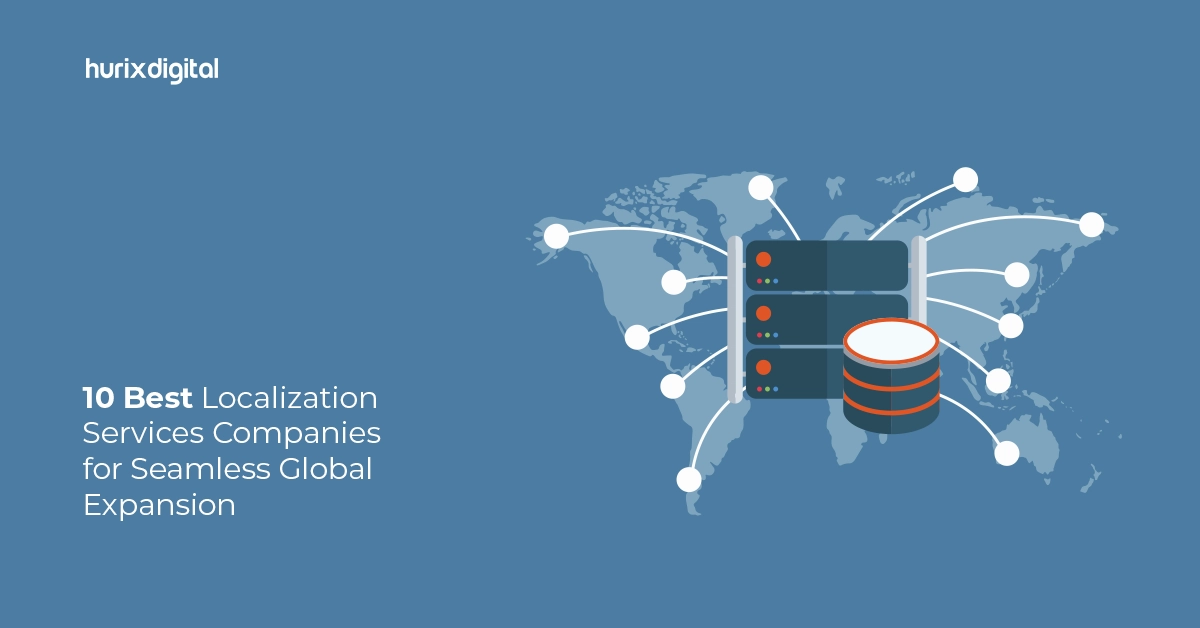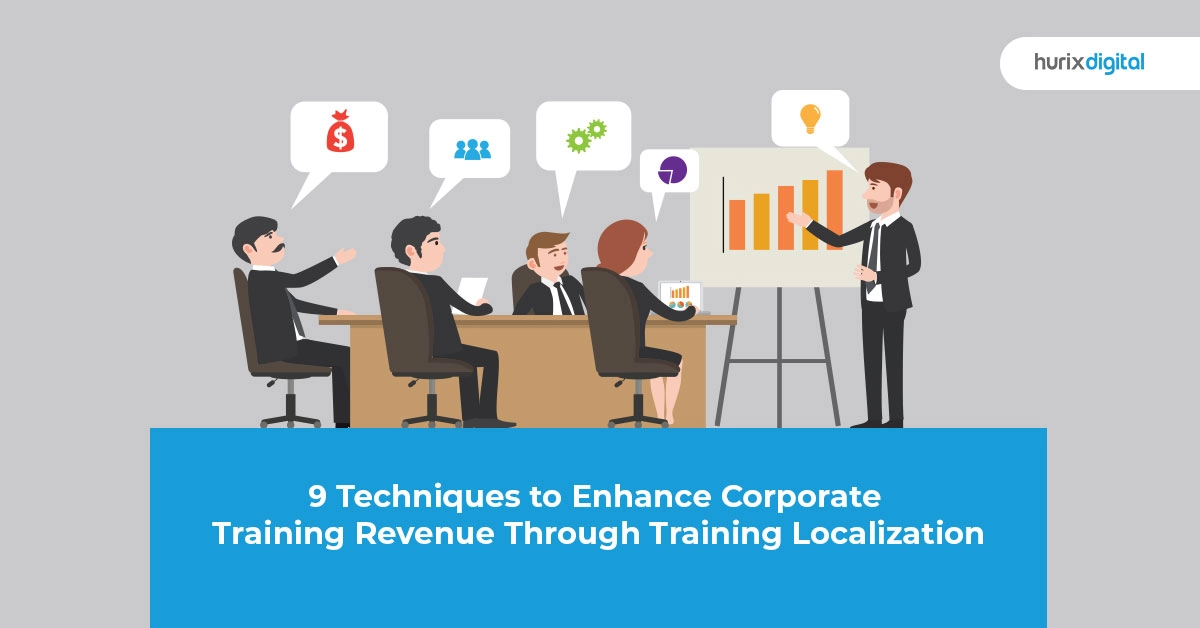Summary
This article discusses the importance of translating and localized workforce learning content. It also discusses the different ways to measure its effectiveness.
The pandemic marked a turning point for education and learning as numerous educational institutions and companies shifted to e-learning. A report estimates that the ed-tech industry will grow up to a value of more than $319.65 billion by the year 2029.
With distance learning and remote work becoming the new normal, businesses increasingly shifted to a digital basis for their training and workforce learning content. A study found that over 58% of the workforce reported skill transformation since COVID-19.
Further, companies and ed-tech businesses are increasingly offering training courses to employees worldwide. Translating and localizing workforce learning material makes it all the more important.
Table of Contents:
- Why Should You Translate and Localize Workforce Learning Content?
- How to Measure the Effectiveness of Translated and Localized Learning Content?
1. Learning Process
2. Learner Response
3. Assessments
4. Application of Knowledge And Skills
5. Work Performance Metrics - Conclusion
Why Should You Translate and Localize Workforce Learning Content?
As multicultural, multilingual, and global workforces become more prevalent, companies are keen to find ways to adapt their workforce learning content to different cultures and localities. Elearning content localization adapts a training course to suit local needs and cultural sensitivities.
While translation involves converting the learning content from one language to another, localization adapts the content to suit a specific region’s cultural and linguistic context. Language and cultural factors are important in how learners perceive and comprehend training content.
When content is localized to suit the learner’s culture, they can better connect with the material, absorb it, and retain knowledge. If training content is not adapted to a particular culture or does not speak to the local context, learners may find it jarring or difficult to relate to.
Learners are also better able to learn when the training content is familiar to them or presented in a context that they are accustomed to. For instance, in Asian countries, learners may be accustomed to a more formal tone of instruction, while in Western countries, a more friendly tone may be appropriate.
Translating and localizing workforce learning content conveys to employees that your workplace is inclusive and takes all its different employees into account in enterprise learning. It helps employees feel valued and also helps them feel more engaged and involved in the training and learning process.
Lastly, learning in one’s native language improves an employee’s ability to comprehend the material and retain skills and knowledge.
Also Read: The Role of Cultural Adaptation in Localizing Workforce Learning Content
How to Measure the Effectiveness of Translated and Localized Learning Content?
There are several ways to measure the effectiveness of translated and localized learning content. It can be measured in terms of learner response to the material, learning process, learner performance in assessments, results in terms of applied knowledge in work, and learner satisfaction.
Here are some of the best ways to measure the effectiveness of translated and localized content for workforce learning and development.
-
Learning Process
The idea behind translating and localizing content is to make learning easier and more efficient.
You can utilize analytics tools of the Learning Management System (LMS) to check the time taken by learners in different regions to finish their training or to complete a particular module.
-
Learner Response
This level of measurement is about assessing learners’ responses to the training and their engagement with different parts of the training.
Feedback forms and surveys are a great way to find out how learners respond to the content and get specific information about how they experienced particular aspects of training.
-
Assessments
Assessments help you measure how much participants are learning in the training. Measuring and analyzing data from assessments is one of the L&D best practices for businesses.
Performance in assessments is a great way to gauge the knowledge acquired and retained by learners. While pre and post-training assessments are an effective way to measure this, they can also be measured by assessments during the course.
Learning analytics can be used to analyze assessments, quiz scores, and the time taken to complete them to help you understand the effectiveness of knowledge retention. If employees can retain what they learned and complete assessments on time, it indicates that the training program is effective.
Certain analytic tools can also show you area-specific data to indicate how employees are doing with different parts of the course and which areas they are finding more challenging.
-
Application of Knowledge And Skills
The main objective of localized and translated workforce learning content is to enable employees to transfer knowledge into skills better. Employees’ ability to transfer knowledge into performance is a key indicator to help you measure the effectiveness of the course.
This could include hands-on skills, digital simulations, game-based activities, and other digital learning solutions. Online simulations provide life-like situations for employees to apply their knowledge and practice the skills they have learned.
This is a great way to collect data about how effective the course is. Along with learner analytics, this can help you assess the areas where there are gaps in knowledge transfer.
-
Work Performance Metrics
One of the main goals of translated and localized workforce training is to improve work performance. This is done through factors such as more efficient and improved quality of service, better productivity, and increased sales.
A change in these key performance metrics after the course can help you assess if the training has impacted employee work performance.
The effect of the training across different teams or departments can be determined with the aid of analytics tools to understand better the areas of the course that are more effective and less effective.
Monitoring employees during work or comparing key performance metrics before and after the course are good ways to measure the effectiveness of the training.
Also Read: The Importance of Translation and Localization in Workforce Learning
Conclusion
Translating and localizing workforce learning content plays an integral role in making it more accessible and effective. It helps employees feel more included and valued. It also improves their engagement with the course content, enabling them to retain knowledge and skills better.
The effectiveness of localized learning materials can be assessed through various factors. These include the learning process, learner response, assessments, application of knowledge and skills, and work performance metrics.
Hurix Digital offers online teaching platforms and workforce learning solutions for businesses and educational institutions. It creates corporate learning solutions to meet diverse requirements. With leading in-class technology and software infrastructure, it offers customized digital solutions and a holistic user experience. Get in touch with Hurix Digital today!











